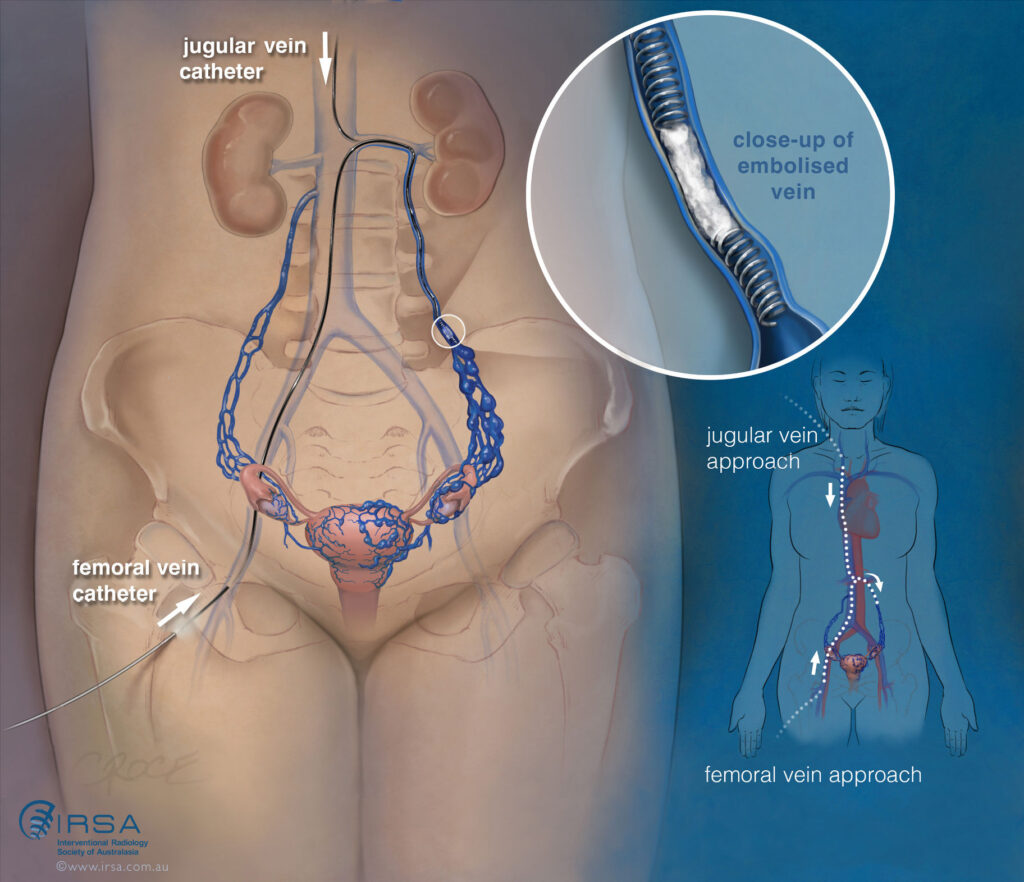EMBOLIZATION FOR PELVIC CONGESTION SYNDROME
What is pelvic congestion syndrome:
- Pelvic congestion syndrome is defined as chronic pelvic pain in women due to incompetent (dilated and refluxing) pelvic veins.
What are the symptoms of pelvic congestion syndrome:
- It is responsible for chronic pelvic pain in 30 % cases of multiparous (multiple pregnancy) women.
- Dragging sensation or pain in the pelvis.
- Feeling of fullness in the legs.
- Worsening of stress incontinence.
How it can be treated:
- Percutaneous transcatheter pelvic vein embolisation is the treatment of choice.
- Other treatment options are open or laparoscopic surgery to tie the culprit veins. Both these procedures are more invasive than ovarian vein embolisation and require a general anaesthetic and a longer recovery period.
- Pelvic vein embolisation is a minimally invasive procedure performed by a specially trained interventional radiologist in the interventional radiology suite.
- Using x-ray image guidance and contrast material to see the blood vessels, the catheter is then directed into abnormal ovarian and/or pelvic vein. Abnormal vein is sealed and blocked using synthetic material or medication called embolic agents.

What are the benefits:
- Pelvic vein/ovarian vein embolisation has been shown to be a safe and effective procedure with relief of the symptoms of pain.
- No surgical incision is needed—only a small nick in the skin that does not have to be stitched closed.
- Fewer complications and the hospital stay is relatively brief – typically this is done as a day case.
Preparation for the procedure:
- Few basic blood investigations like CBC, PT/INR, viral markers.
- Fasting for 4-6 hrs.
- Bring all the records including imaging record.
- Signing consent form.
What are the risks:
- Pain, bleeding, non-target embolization, infection (<1 case in 1000).











